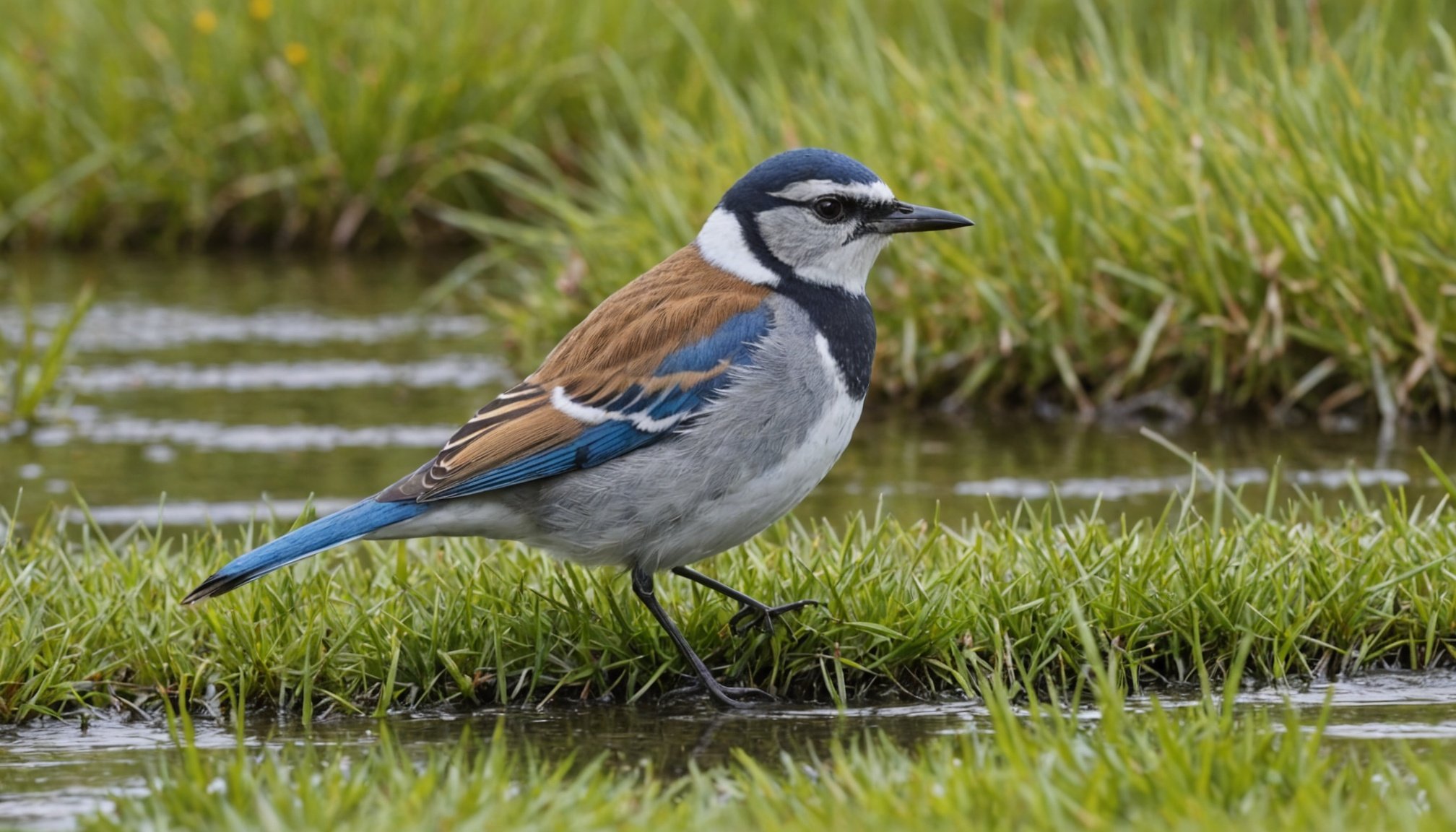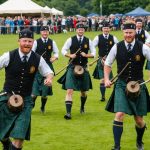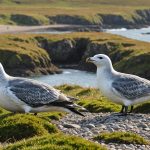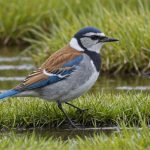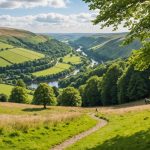Overview of Premier Spring Birdwatching Destinations in the UK
Spring heralds a vibrant resurgence of nature, making it the perfect season for birdwatching in the UK. As the landscape bursts into colour, birds return from their wintering grounds, creating optimal conditions to witness the marvel of migration. Enthusiasts flock to these premier birdwatching locations to catch a glimpse of the diverse species on display.
The UK’s varied regions offer unparalleled opportunities for spring birdwatching. From the rugged coastlines of Scotland to the pastoral beauty of English birdwatching sites, each area boasts its unique appeal. These destinations not only promise a visual feast of avian encounters but also highlight the unique flora and fauna vital for the birds’ seasonal needs. The lush greenery and blooming flowers provide both a feast and a refuge for migratory and resident birds alike.
Have you seen this : Explore the Top Coastal Trails in the UK for Unforgettable Seal and Seabird Watching Adventures
Exploring these regions allows visitors to engage deeply with nature, capturing magical moments with species hard to spot elsewhere. Birdwatchers are treated to diverse habitats ranging from the wild moors and dense woodlands to serene wetlands, each teeming with life during the spring months. Whether you’re a seasoned observer or a curious novice, the UK offers a bounty of birdwatching delights.
Top Birdwatching Sites in England
Site 1: The Yorkshire Dales
The Yorkshire Dales offers a breathtaking tapestry of landscapes, where limestone valleys meet pastoral beauty. Birdwatchers frequently visit for its rich ecosystems, which include stunning moorlands and wooded valleys. Here, enthusiasts can spot key bird species such as the peregrine falcon and the elusive black grouse, thriving thanks to the diverse flora found in this region. For those planning a visit, accessibility is straightforward, with paths and trails making exploration easy. Spring is the optimal season, providing clear views and active birdlife.
This might interest you : Immerse Yourself in Tradition: The Definitive Guide to Scottish Highland Games Adventures!
Site 2: Norfolk Broads
Renowned for its wetlands, the Norfolk Broads boast attributes that make it a premier destination for birdwatching in England. Visitors can find the beautiful bittern and the vibrant kingfisher adding splashes of colour to the serene lakes and rivers. As spring unfolds, migration patterns bring in a wealth of birdlife, creating a vibrant haven for observers. Beyond the birds, nearby cultural attractions enhance the overall experience, offering a rich glimpse into the region’s heritage.
Site 3: Rye Harbour Nature Reserve
At Rye Harbour Nature Reserve, various habitats, including saltmarshes and shingle beaches, play a pivotal role in bird conservation. Visitors might explore trails with guided tours, enriching their birdwatching journey.
Birdwatching Destinations in Scotland
Spring brings a magnificent display of avian activity in Scotland, where Scottish birdwatching locations offer an impressive array of sights.
Site 1: Loch Lomond and The Trossachs National Park
Nestled amid towering peaks and tranquil waters, Loch Lomond and The Trossachs National Park is an avian paradise. It boasts a variety of diverse ecosystems, ranging from woodlands to heather moorlands. Spring awakens the landscape, attracting a plethora of bird species like the striking osprey and the melodic wood warbler. The park’s well-marked trails offer visitors a chance to explore its birdlife richness while being immersed in serene natural beauty.
Site 2: Isle of Skye
The Isle of Skye lures birdwatchers with its rugged cliffs and open vistas. These unique attributes make it a hotspot for birdlife throughout the year. During springtime, observers may encounter species like the majestic white-tailed eagle. The island’s various habitats ensure that both resident and migratory birds find ample resources. Easy access via the Skye Bridge or ferry adds convenience for enthusiasts eager to witness nature’s unfoldings.
Site 3: Fife’s Eden Estuary
Fife’s Eden Estuary holds ecological significance as a haven for migratory birds. It’s renowned for the congregations of wading birds and wildfowl during their migratory journeys. Birdwatchers are advised to time their visits for high tides, promising optimal viewing experiences while savouring the estuary’s tranquillity.
Birdwatching Opportunities in Wales
Wales offers a dynamic landscape for birdwatching, where varied habitats attract diverse avian species. Birdwatching in Wales boasts breathtaking coastal views and rich woodlands, each vital for migratory patterns.
Site 1: Pembrokeshire Coast National Park
A gem for birdwatchers, the Pembrokeshire Coast National Park is replete with stunning coastal cliffs and islands. This environment attracts seabirds like puffins and razorbills, who nest in colonies along the rugged coastline. Numerous viewing points and accessible trails meander through the park, providing optimal vantage spots for bird enthusiasts. Springtime sees educational programs that engage visitors, including birdwatching walks led by experts eager to share insights into avian behaviour.
Site 2: RSPB Ynys-hir Nature Reserve
The RSPB Ynys-hir Nature Reserve is famed for its diverse habitats, from wetlands to woodland areas. Birds such as the red kite and lapwing find sanctuary here. Seasonal activities like guided walks and bird ringing sessions bring birdwatchers closer to the natural world. Accessible facilities ensure a comfortable visit, making the reserve an ideal destination for a day trip.
Site 3: Anglesey
The island of Anglesey is a hub of birdlife, with rare species often spotted in its meadows and wetlands. Strategic viewing advice enhances chances of sighting rarities, while the island’s other nature attractions complement your visit, offering a comprehensive wildlife experience.
Northern Ireland Birdwatching Highlights
Northern Ireland presents captivating opportunities for birdwatching, particularly during the vibrant spring migration. This season witnesses an influx of avian species, enriching the landscape with their presence.
Site 1: Lower Lough Erne
Lower Lough Erne is a refuge for diverse bird species, especially during the spring migration. As countless birds traverse expansive water bodies, they provide visitors with exceptional viewing opportunities. Enthusiasts can spot a variety of ducks, waders, and swans amidst the lough’s tranquil setting.
Local guides offer invaluable knowledge, assisting birdwatchers in identifying and understanding the rich biodiversity. Their expertise provides clarity on nesting habits and behaviours unique to the Northern Irish birdwatching locations.
Site 2: Rathlin Island
Rathlin Island is famed for its rugged beauty and premier birdwatching locations. The island’s dramatic cliffs are home to thousands of seabirds like puffins and guillemots, which nest in dense colonies. Conservation efforts have bolstered these populations, ensuring future sightings.
Visitors are encouraged to plan their journey with transportation in mind, as travel tips include ferry schedules. This aids in maximising the island’s exploration time.
Site 3: Mourne Mountains
The Mourne Mountains provide an inspiring backdrop for birdwatching and hiking. Varied habitats host a plethora of bird populations, allowing observers to enjoy remarkable moments in nature.
Expert Tips for an Effective Birdwatching Experience
Enhance your birdwatching experience with simple, effective strategies designed to maximize enjoyment and success. Equip yourself with essentials like binoculars and a field guide, crucial for spotting and identifying a wide range of species. Recommended gear ensures better focus and clarity, making it easier to track avian movement and characteristics.
When on-site, patience is paramount. Birdwatching tips suggest staying quiet and still to blend in seamlessly with natural surroundings. This respectful approach increases chances of observing birds in their undisturbed habitats. Additionally, learn to identify birds by their calls, as many species may stay hidden from plain sight. Familiarity with calls enriches your understanding of bird behaviour and habitat.
Field notes are invaluable for honing observation skills. Jotting down distinctive features and locations helps refine identification abilities over time. Engaging in this practice during more varied visits contributes to a richer birdwatching experience. Be it in Northern Ireland or any other region, cultivating a patient, informed approach highlights birdwatching as a rewarding pursuit for all enthusiasts. Following these straightforward insights ensures every excursion is as fruitful and fulfilling as possible.

